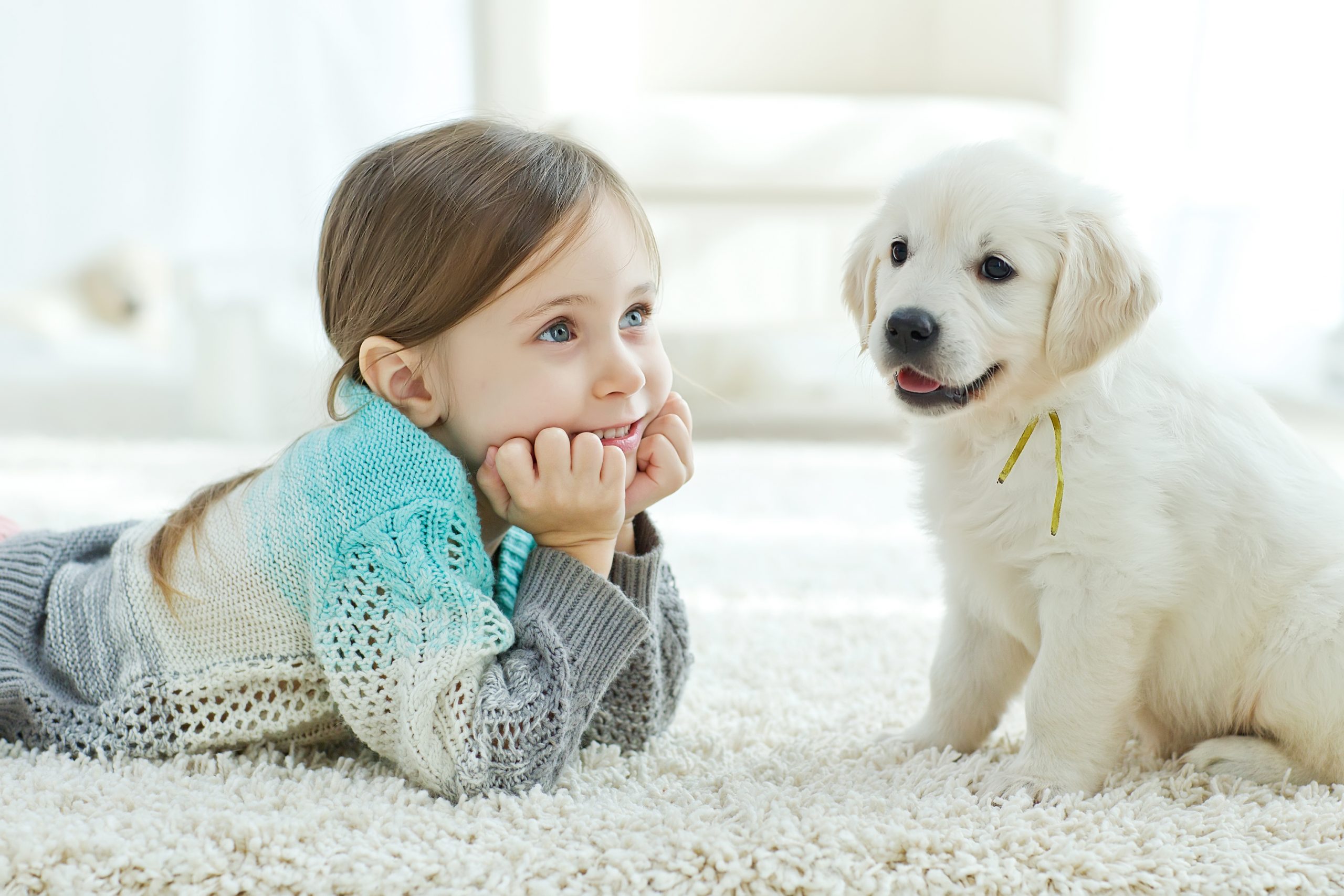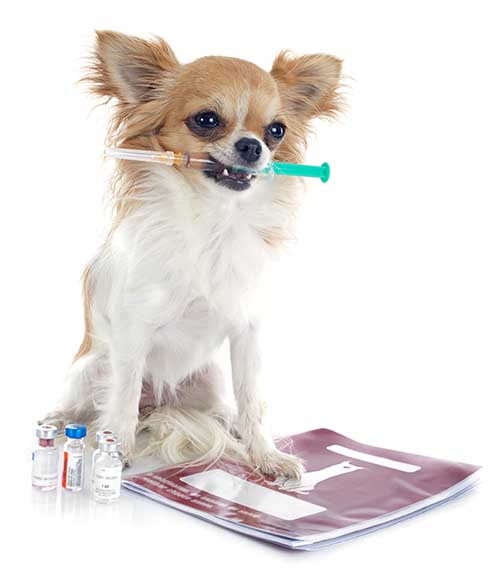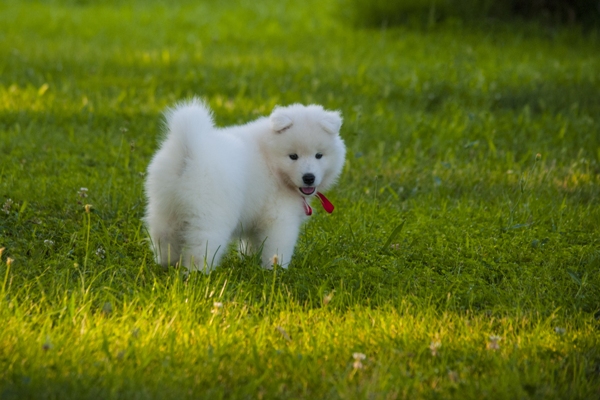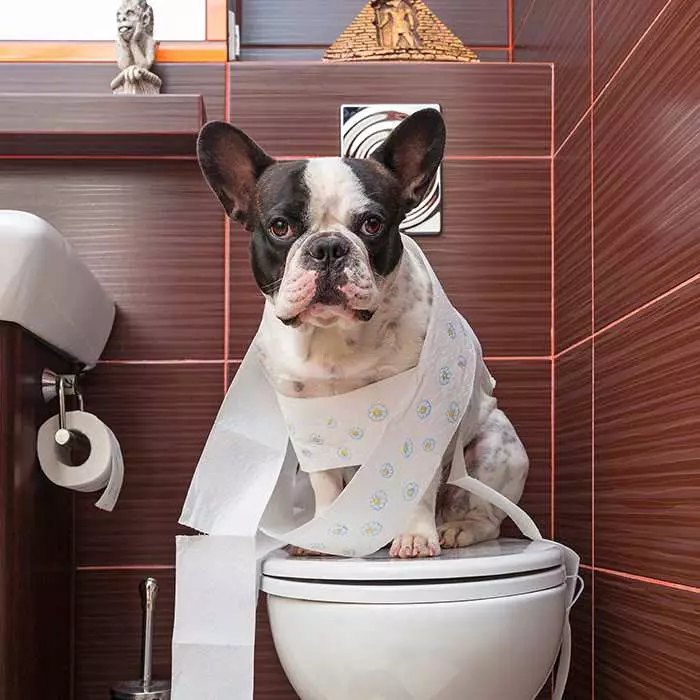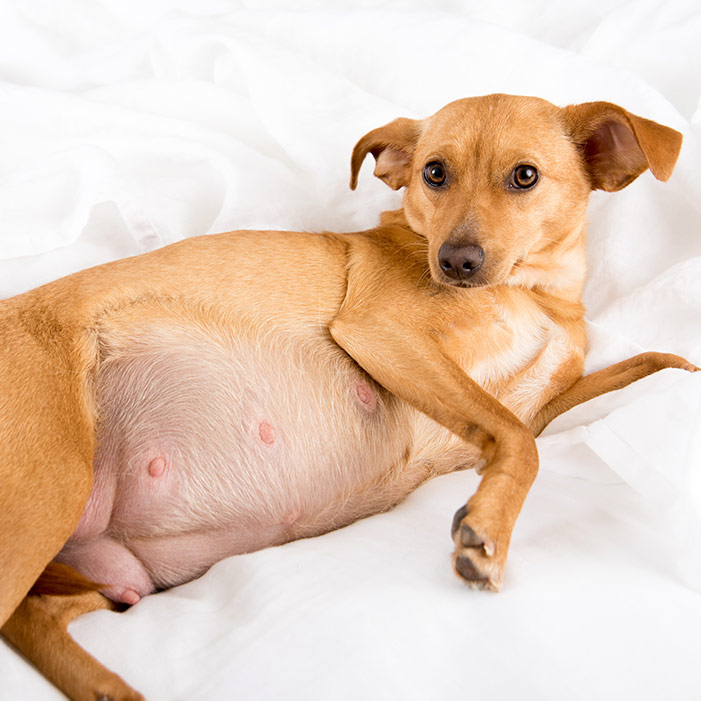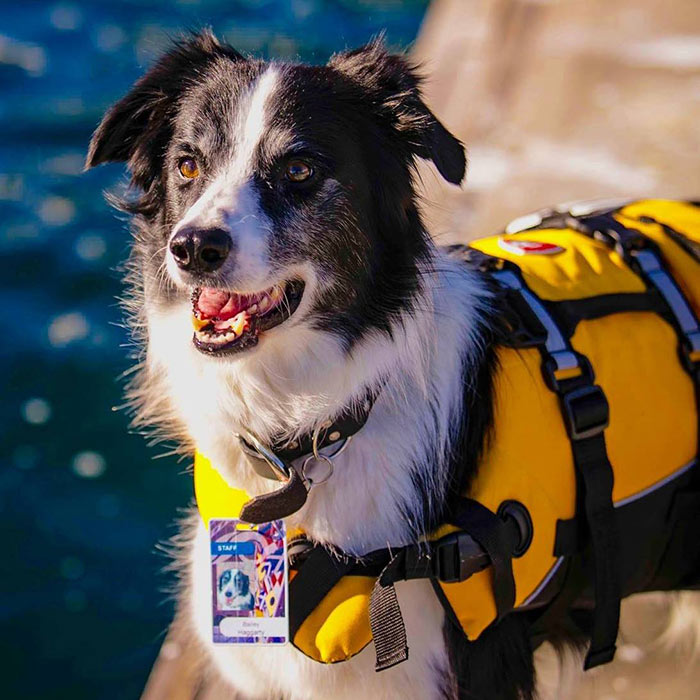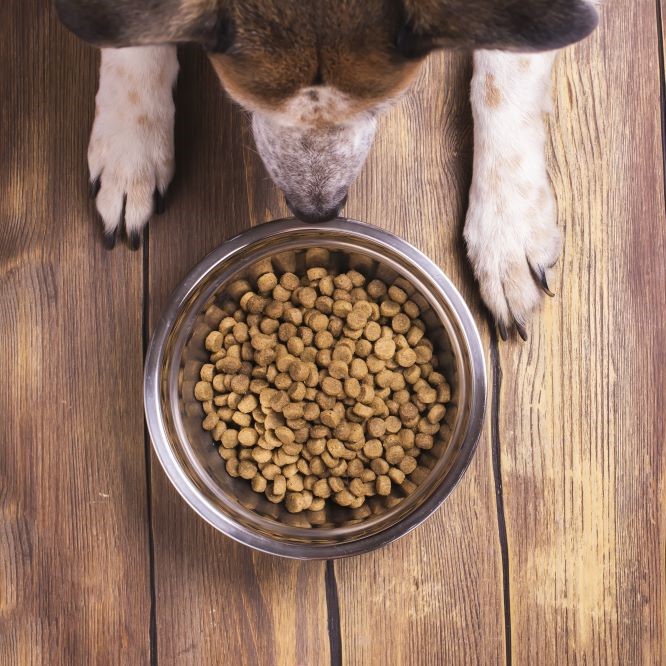How to train a puppy: Puppy training tips & advice
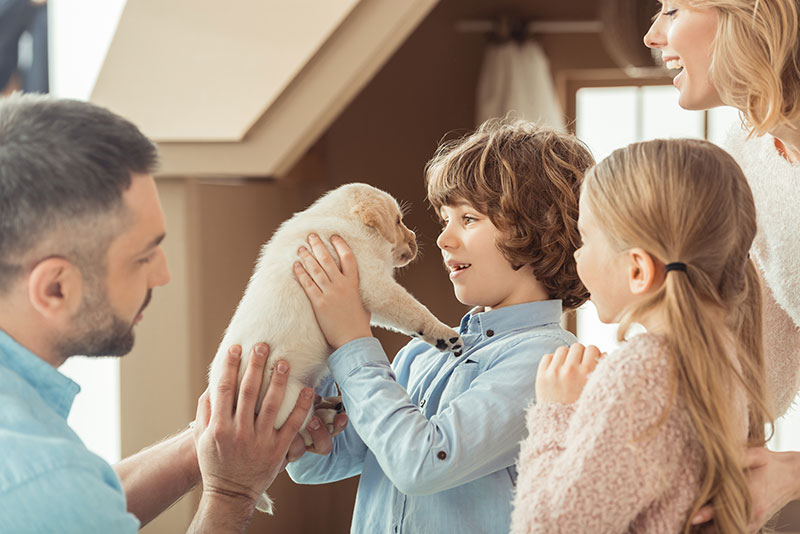
Once you have your furry bundle of joy settling in at home, it’s time to sit down with the family to discuss how to train your puppy.
Discussions around training your puppy should lead to decisions about:
- What rules your puppy needs to follow
- Where it is allowed to go
- The commands you wish to use
- Who is in charge of which puppy-related tasks in your home
Establishing family rules
 There are no set rules for how to train a puppy and every household will have a slightly different view of which behaviours are acceptable and which are not. It is very important that everyone in the family is part of the discussion around rules and in agreement with the decisions taken. After all, the rules will apply not just to the new pup but to all family members, both adults and children, as well!
There are no set rules for how to train a puppy and every household will have a slightly different view of which behaviours are acceptable and which are not. It is very important that everyone in the family is part of the discussion around rules and in agreement with the decisions taken. After all, the rules will apply not just to the new pup but to all family members, both adults and children, as well!
Make sure that the rules you set around your new puppy are very clear. That way, everybody involved in raising the puppy, even very young children, will know exactly what pup is or is not allowed to do. Clear rules that are reinforced by everyone will help your puppy to learn faster and avoid getting confused. If the rules are applied inconsistently, puppy will not know what is expected of him or what he can expect of you.
Puppy training tip #1: Decide where the puppy is allowed
You may want to establish puppy house rules around where in your home the puppy is allowed. Some families allow their pets free range of the home, while others may, for example, restrict them to the downstairs areas only, prevent access to bedrooms or bar them from the formal lounge room or the kitchen.
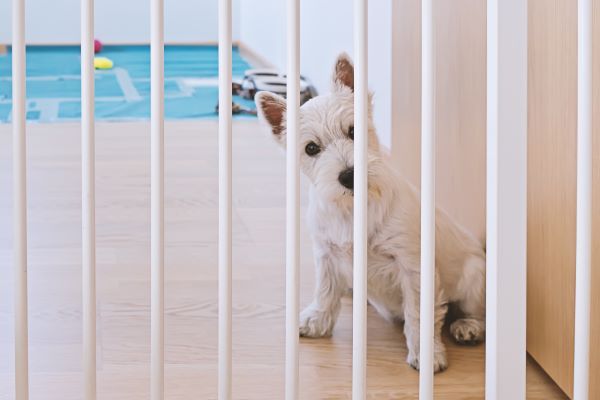
There is no right or wrong here; when it comes to how to train a puppy, it is what works best for your family’s circumstances. What is crucial is that everyone knows the rules, and everyone enforces them. Consistency is the key factor when it comes to training your puppy.
Puppy rules to consider
| YES | NO | |
| Is puppy allowed on the couch? If you answered YES, teach your puppy a command to get up on the couch. That way you can stop your puppy getting on it when he is muddy or wet. Also remember that tiny puppies will grow into larger, and in some breeds, very large adults, who are not as cute and cuddly, won’t fit on your lap and may in fact take up most of the couch!. |
||
| Is puppy allowed to sleep on the bed? If you answered YES, teach your puppy a command to get up on the bed. |
||
| Is puppy allowed to swim in the family pool? If you answered YES, please teach your puppy how to get in and out of the pool safely to avoid the risk of drowning. |
||
| Is puppy allowed to sit under the table during family dinner? | ||
| Is puppy allowed to beg at the table? | ||
| Is puppy allowed to jump up on you or the kids? | ||
| Is puppy allowed to give kisses and licks? | ||
| Are there any areas in the house that are off limits for your puppy? If so, make a list of them |
Review your rules after a few months
 You might have changed your mind on some puppy house rules, and it could be useful to get everybody together to review and readjust the rules after a period of time. It is fine to start off with stricter rules and stick to them for a few months so that the puppy learns and accepts them, and then modify them as required later on, or in certain situations.
You might have changed your mind on some puppy house rules, and it could be useful to get everybody together to review and readjust the rules after a period of time. It is fine to start off with stricter rules and stick to them for a few months so that the puppy learns and accepts them, and then modify them as required later on, or in certain situations.
For example, if you don’t want your puppy jumping up on the furniture whenever he feels like it, you can start with the rule that puppy is not allowed on the furniture at all. Once this rule is well-established, it can be adjusted to allow puppy on the furniture when a particular command or cue word permits it, or only on a certain piece of furniture.
Deciding who does what
Make it a joint responsibility to look after your new family member. Decide exactly who will carry out each task necessary to take proper care of him, what the task entails, and when and how often it needs to be done.
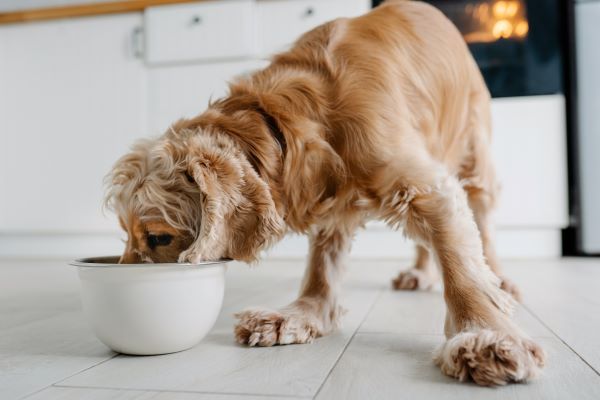
Puppy training tip #2 – Use a weekly chart
We suggest that you record the name of the person responsible for each task in a table like the one below, print it out and post it in a visible place as a daily reminder to everyone of what their responsibilities are. This will ensure that the whole family is involved and duties around the puppy won’t get forgotten.
If tasks are regularly skipped or overlooked, your puppy won’t be properly cared for. On the other hand, spending dedicated time each day with pup, whether by taking him for a walk, providing his meal or giving him a good brush, will strengthen the bond between the family member and the puppy.
| Day of the week | |||||||
| Task | M | T | W | T | F | S | S |
| Feeding morning | |||||||
| Feeding evening | |||||||
| Walk morning | |||||||
| Walk evening | |||||||
| Brushing & grooming | |||||||
| Training | |||||||
| Poop- scooping | |||||||
Teaching your puppy commands
The cornerstone of how to train a puppy involves teaching your puppy to follow commands. This can be a job for the whole family. For your pup to learn quickly it is important that everyone is consistent with the use of commands and their meanings.
Commands are usually verbal but they can also be gestures or signals. To optimise learning, limit the number of words used in your commands and the number of gestures or signals the puppy needs to understand.
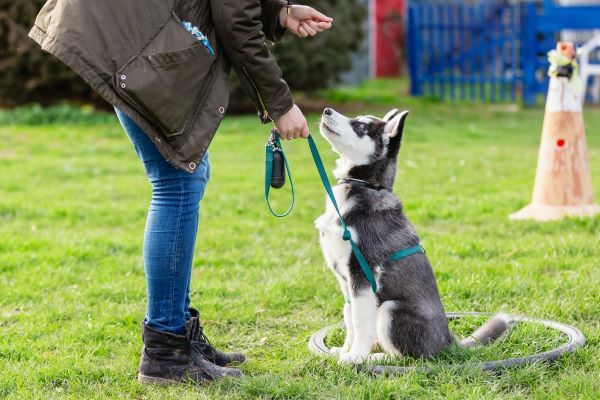
Puppy training tip #3 – Use a command list
To make this task easy for you, please find a sample command list below, which includes space to add your own commands and desired behaviours. We suggest that you print it out and place it somewhere where everyone can see it.
| Verbal command | Desired behaviour |
| Sit | Sit |
| Stay | Stay until you come back to him |
| Come | Come back to you |
| On your bed | Go to his bed and lie down |
| Heel | Walk nicely on the left hand side on a loose lead and stop and sit each time you stop. |
| Leave it | Leave/drop whatever he has picked up or is looking at, and don’t touch it again. |
| Drop | Lie down |
| Give | Give the toy/ball |
| Fetch | Run after the toy/ball and bring it back to me |
| Add your own: | |
|
|
|
|
|
|




